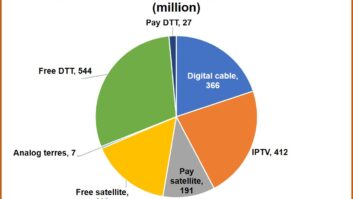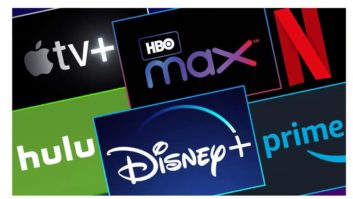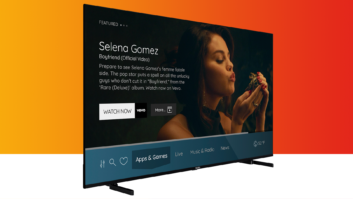
As more television sets become internet-enabled, online content is finding its way from computer and mobile screens to the TV screens of our living rooms. Media consumption is increasingly personal, and ‘watching TV’ is becoming less about the TV set and more about engaging with content across multiple screens. On-demand is on the rise and we are now watching more catch-up and SVoD content. So how is this all going to affect broadcast television? Are pay-TV providers an endangered species, or will they be able to thrive in this digital era
Since the launch of OTT streaming, the pay-TV industry has undergone a seismic shift. According to a recent Thinkbox report on the UK market, broadcast TV viewing has stayed relatively stable over the past decade, accounting for 76 per cent of all video consumed. Yet online video has grown steadily during that period and SVoD services now account for four per cent of total video (including TV and online video) consumed in 2015, up from 2.3 per cent in 2014. Online video streaming is on the rise and viewers are consuming more video in increasingly varied ways. YouTube, for example, has grown as a proportion of total video in the last year, from 3.5 per cent in 2014 to 4.4 per cent in 2015.
This rapid shift is being driven in part by the growing number of connected consumers. Young people (aged 16-24 years), are now spending 58 per cent of their time watching television. For five to 16 year olds, the shift online has been even more significant and, on average, they now spend three hours a day online compared with 2.1 hours watching television, according to research agency Childwise.
Will we still pay for TV?
But for all the anticipation of a digital future, traditional TV is not in decline. While the internet has become more influential over the past decade, pay-TV providers remain a significant part of the television landscape. Most OTT providers lack substantial TV programming experience. Although some now produce content, the majority of streaming services remain device-oriented.
The internet video field moves fast, but it takes a long time to become an expert at creating and developing the TV experience. This means not only providing the navigation tools but also developing the overall user experience that helps viewers get to the content they love. By expanding into online subscription services and investing into smart user experience applications, pay-TV operators are arguably better placed than pure-play players like Netflix to benefit from the consumer demand for high quality content.
The mad men of digital
Despite the rise of digital, we should not forget that traditional TV still brings in the largest advertising share at a projected 38.7 per cent of advertising spend worldwide, according to McKinsey & Company. But as the digital share of the advertising wallet expands, the new media landscape requires pay-TV providers to adopt the right strategy.
Data showing who’s watching what will also play a big role in the future. Offering advertisers the opportunity to intelligently segment and target specific audiences is becoming increasingly important for broadcasters, and those that can supply the most precise data will put themselves in the best position to offer advertisers the most cost-efficient path to the consumer.
However, the ad industry isn’t rushing to entirely replicate the digital model. Rich Lehrfeld, senior vice president of global brand marketing at American Express, recently highlighted the continued importance of TV advertising, saying: “We need to run two weeks of digital [advertising] to get the reach of one day of broadcast.”
In an environment where consumers are no longer all watching the same programmes at the same time, large-scale live events like the World Cup, Super Bowl and Olympics have become even more valuable. This is just one of many examples where traditional pay-TV providers have the opportunity to use their highly valuable live content to stay relevant with advertisers and rights owners.
A future-ready model
The challenge for pay-TV providers is how to respond with the right platform and business model. A recent study found that 22 per cent of consumers who have never had a pay-TV subscription are already paying for OTT content services. This indicates a willingness to pay for subscription television provided they are offered a package that’s right for them.
We are also seeing a growing move towards self-service bundling. Some leading pay-TV providers have responded by introducing innovative ‘skinny’ bundles that offer the consumer more flexibility. At the same time, providers need to incorporate the most attractive aspects of OTT services, such as shorter commitment periods, lower entry costs and simpler installation requirements. By extending their reach while offering subscribers more options, providers can turn challenges, such as the rising popularity of streaming, into opportunities.
The future of TV
We are entering a new phase where media will be everywhere, not just on a fixed television set; a future of converged media combining broadcast and streaming in one place. It’s no longer a debate between TV and digital. However disruptive OTT may be, large pay-TV providers continue to hold a major advantage through their established infrastructures and programming expertise. In an increasingly fragmented market, providers need to continue to strengthen their relationship with subscribers and offer them a high quality multiscreen television experience. The providers that can offer greater reach while offering the consumer greater choice will be the success stories of the next generation.
By Simon Trudelle, senior product marketing director, NAGRA





